There are ten different National Park Service (NPS) sites in Oregon, along with numerous U.S. Forest Service and Bureau of Land Management (BLM) lands. If you are looking for the best Oregon national parks, forests and monuments, this blog post has them all.
From fascinating historic sites, including both Native American sites and pioneer trails, to sprawling volcanic landscapes, caves, badlands and rain forests, the sheer diversity of the national forests, monuments and national parks in Oregon is amazing.
Contents
- Top 9 Oregon National Parks, Forests and Monuments
- 9. Fort Vancouver National Historic Site
- 8. Oregon National Historic Trail
- 7. Oregon Caves National Monument
- 6. Lewis and Clark National Historical Park
- 5. John Day Fossil Beds National Monument
- 4. Mt. Hood National Forest
- 3. Deschutes National Forest
- 2. Newberry National Volcanic Monument
- 1. Crater Lake National Park
- Full List of the 10 Oregon National Park Service Sites
- Other Great Oregon National Forests and Public Lands to Visit
- National Parks in Other States and Regions
Top 9 Oregon National Parks, Forests and Monuments
Best known for its verdant forests, waterfalls, mossy gorges and stunning coastline, Oregon also has a huge area of high desert scenery. In fact, much of central and eastern Oregon is made up of arid hills, river canyons and vast ranchlands.
The state also has an incredibly rich history. After Lewis and Clark blazed a trail to the Pacific Ocean partly via the Columbia River, thousands followed in their footsteps, creating the now-legendary Oregon Trail.
This is just to say that, when exploring the national parks in Oregon, you can expect a lot of variety. I recommend including a little bit of everything in your itinerary.
Visit a historic site or two, a national monument, at least one of Oregon’s volcanoes and—of course—the state’s only “actual” national park. The sparkling jewel in the crown of Oregonian nature, Crater Lake National Park is the highlight of any Oregon national parks road trip.
This post about Oregon national parks, forests and monuments contains affiliate links. You can read more about our Terms of Use / Disclosure here.
9. Fort Vancouver National Historic Site
Managed by: National Park Service
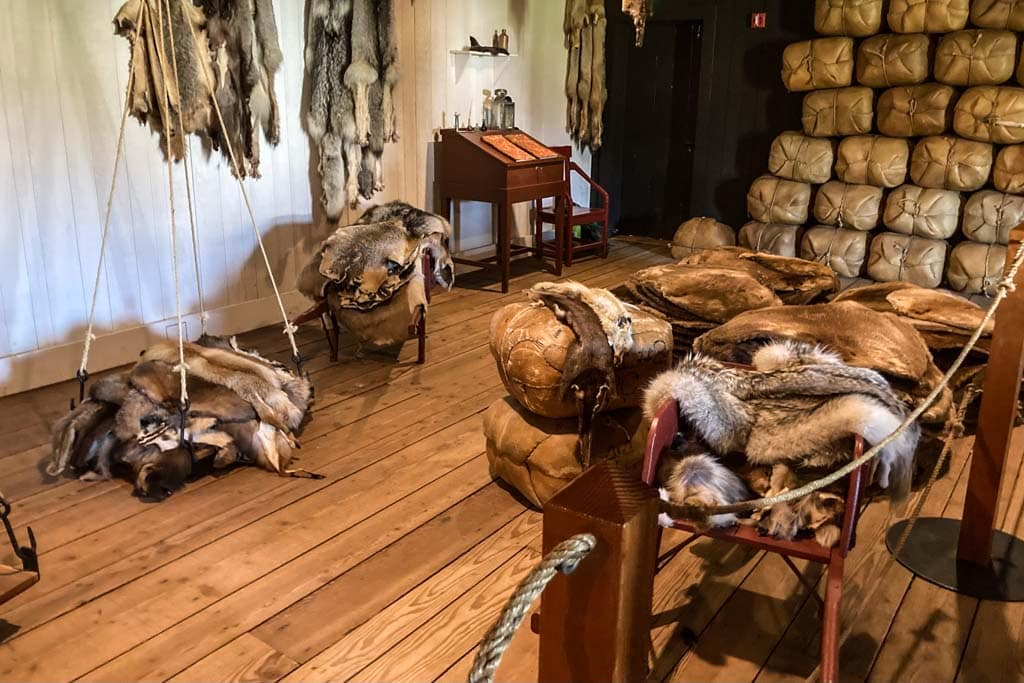
Situated on the Columbia River’s northern bank in Vancouver, Washington, just across the river from Portland, Oregon, Fort Vancouver National Historic Site highlights the story of pioneers, settlers, Native Americans and explorers.
The closest National Park Service unit to Portland, it’s located at the site of the 19th-century headquarters of the Columbia Department of the Hudson’s Bay Company.
While the actual fort is not in Oregon, it’s only 15 minutes from downtown Portland. This NPS unit does include a site in Oregon, though, which is why it made this list.
This former frontier fur trading post grew into a powerful military fort and, later, an airfield and shipbuilding site, playing a significant role in United States history.
Named after Captain George Vancouver, Fort Vancouver was an important crossroads of multiple trade routes, including those coming overland from the East Coast, ships from places as varied as Britain and China, and several Native American trails.
Nowadays, the Fort Vancouver National Historic Site has a full-scale replica of the fort, including buildings like a carpenter shop, bakery, blacksmith shop and kitchen.
The park’s second site is located in Oregon: the McLoughlin House in Oregon City, just south of Portland. This historic home was the residence of John McLoughlin, the chief factor and overseer of Fort Vancouver’s fur trading operations between 1825 and 1845.
He was also a skilled physician who offered help to exhausted and often-famished travelers who arrived at Fort Vancouver after the arduous journey along the Oregon Trail.
McLoughlin took up residence in this house after his retirement from the Hudson’s Bay Company in 1846, after which he became a community leader and mayor of Oregon City.
More information: https://www.nps.gov/fova/index.htm
8. Oregon National Historic Trail
Managed by: National Park Service
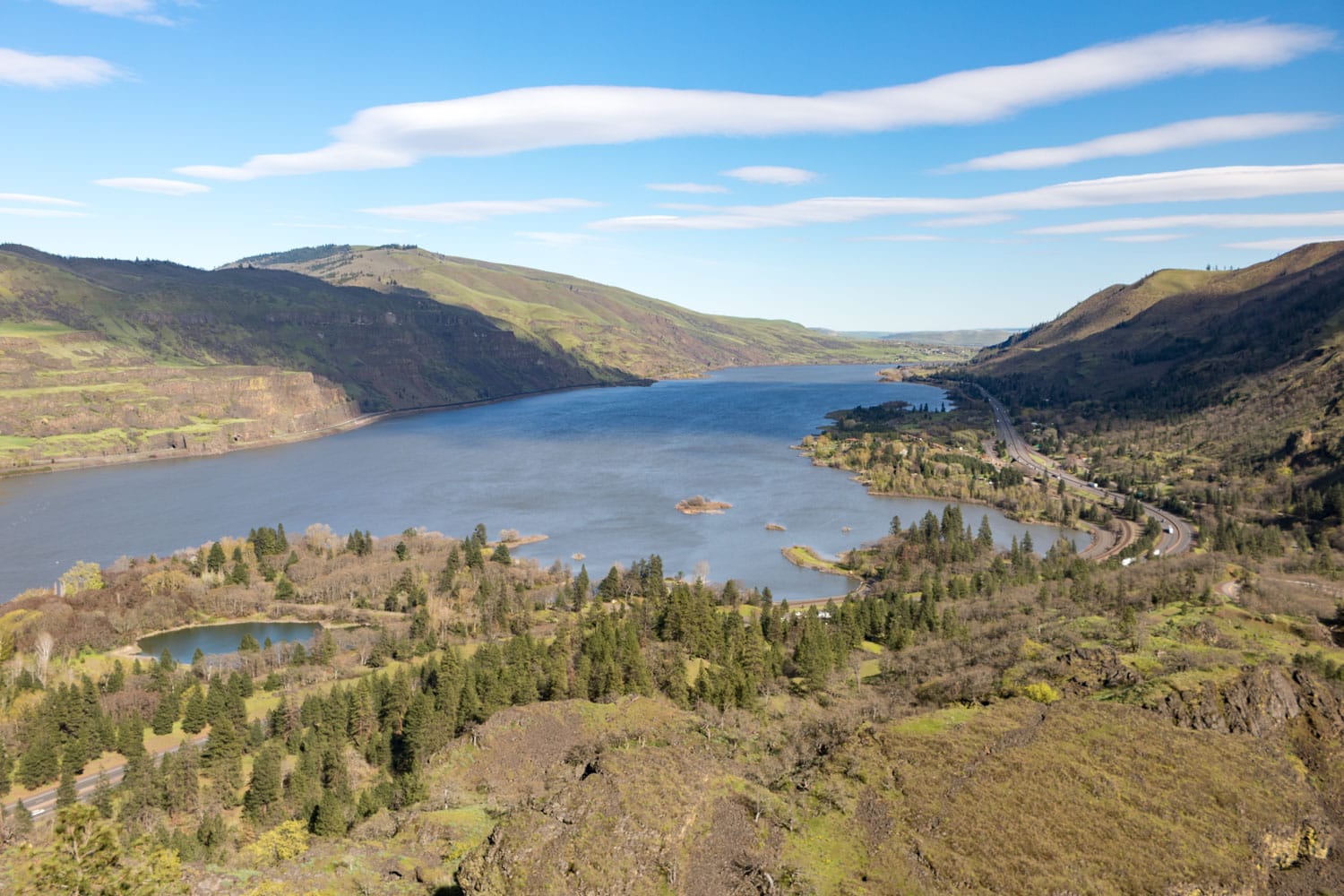
Few historic places in Oregon are as famous and iconic as the Oregon Trail. This could hardly be called a “place”, though, but rather a long series of historic sites.
The Oregon National Historic Trail is more than 2,000 miles long. It runs from Independence, Missouri to Vancouver, Washington and Oregon City and Portland in Oregon.
After the Lewis and Clark Expedition had found a route to the Pacific Ocean, the Oregon Trail brought thousands of pioneers to the American West.
Those intrepid travelers, whether guided by delusional dreams or determined entrepreneurship, typically journeyed from the Great Plains to Oregon’s Willamette Valley.
The current Oregon National Historic Trail follows much of the trail’s original course, linking various sites spread along thousands of miles and across several states. It’s still a popular road trip.
This Oregon National Park Service unit consists of half a dozen official NPS sites. From east to west, they’re the following:
- Flagstaff Hill / National Historic Oregon Trail Interpretive Center (Baker City)
- Tamástslikt Cultural Institute (Pendleton)
- Umatilla Lower River Crossing (Echo)
- Columbia Gorge Discovery Center and Wasco County Historical Museum (The Dalles)
- End of the Oregon Trail Interpretive Center (Oregon City)
- McLoughlin House (Oregon City, part of Fort Vancouver National Historic Site)
Additionally, there are numerous other Oregon Trail sites managed by other agencies. Examples are the Keeney Pass Interpretive Site, the Birch Creek Trail Site, Ladd Marsh Wildlife Area Overlook and Rowena Crest Viewpoint.
More information: https://www.nps.gov/oreg/index.htm
7. Oregon Caves National Monument
Managed by: National Park Service
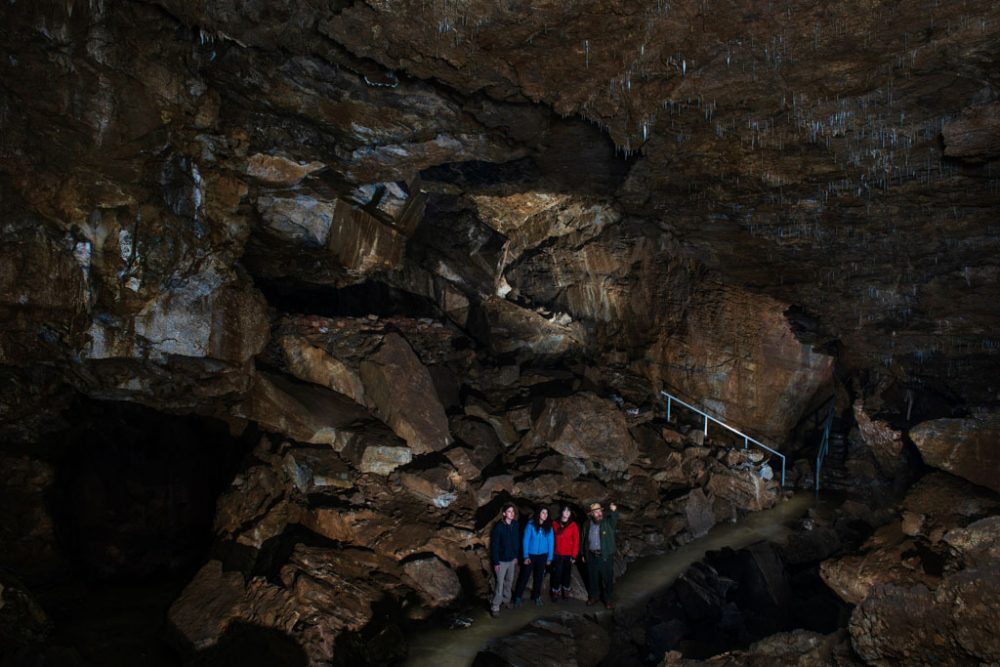
Located deep within Oregon’s Siskiyou Mountains, the Oregon Caves are another amazing Oregon National Park Service site worth visiting.
This is a great side trip if you’re visiting Crater Lake National Park or other national parks or forests in southern Oregon. Additionally, it’s also part of the “Circle of Discovery” driving route, an amazing national parks road trip that includes all NPS sites in southern Oregon and northern California.
These “Marble Halls of Oregon” are home to spectacular marble formations and passageways, a popular tourist attraction in this remote part of the Pacific Northwest.
Cave tours are the obvious thing to do at Oregon Caves National Monument. You can go on Discovery Cave Tours, a Candlelight Cave Tour, and Kids and Family Tours. Experienced speleologists can go on off-trail tours, too.
Hiking and wildlife watching are other fun activities in this amazing southern Oregon national monument.
More information: https://www.nps.gov/orca/index.htm
6. Lewis and Clark National Historical Park
Managed by: National Park Service
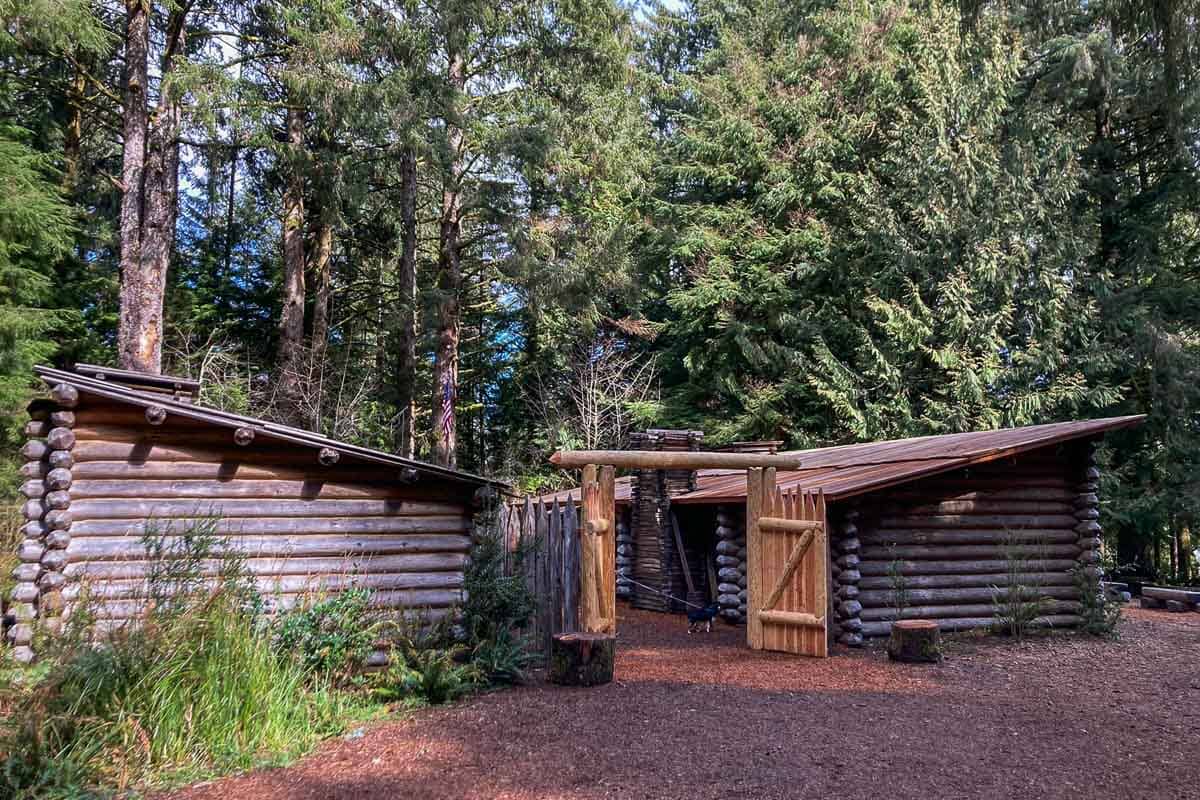
Retelling the story of arguably America’s most famous pair of homegrown explorers, this multi-unit park consists of several sites along both the Pacific Coast and the Columbia River.
On the beautiful northern Oregon coast lies Fort Clatsop, the main unit of Lewis and Clark National Historical Park.
After reaching the Pacific Ocean at the mouth of the Columbia River, Lewis and Clark’s Corps of Discovery spent the winter of 1805-1806 at Fort Clatsop before embarking on their return trip.
The Fort Clatsop unit now includes a replica of the original Fort Clatsop, as well as a bookstore, theater and exhibition room.
Near Fort Clatsop, you’ll also find the Fort to Sea Trail, a 6.1-mile-long hiking trail from the Fort Clatsop Visitor Center to the Pacific Coast at Sunset Beach.
It’s definitely worth mentioning that Lewis and Clark National Historical Park also commemorates the rich heritage of Native Americans who once lived on the majestic coasts and in the pristine rain forests of Washington and Oregon.
If you’re looking for Oregon national parks along the Oregon Coast, this is an absolute must-visit destination.
Additionally, there are also a few state parks related to the Lewis and Clark Expedition nearby. The most famous examples are Ecola State Park in Cannon Beach and Fort Stevens State Park near Astoria.
More information: https://www.nps.gov/lewi/index.htm
5. John Day Fossil Beds National Monument
Managed by: National Park Service
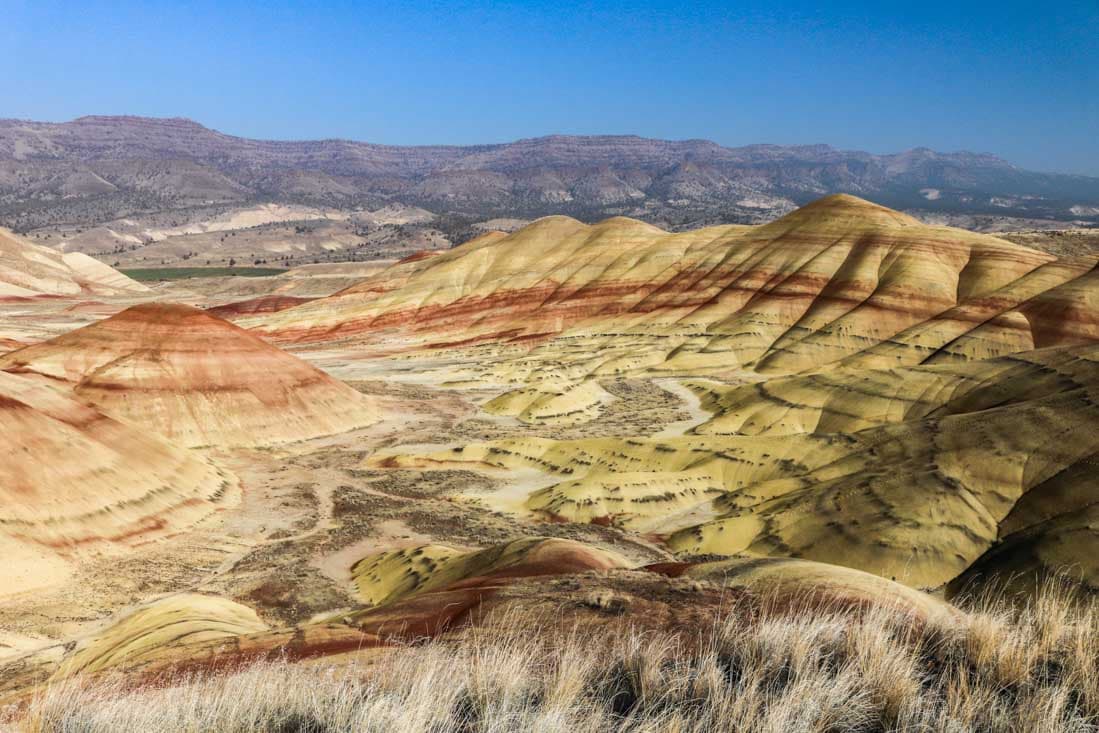
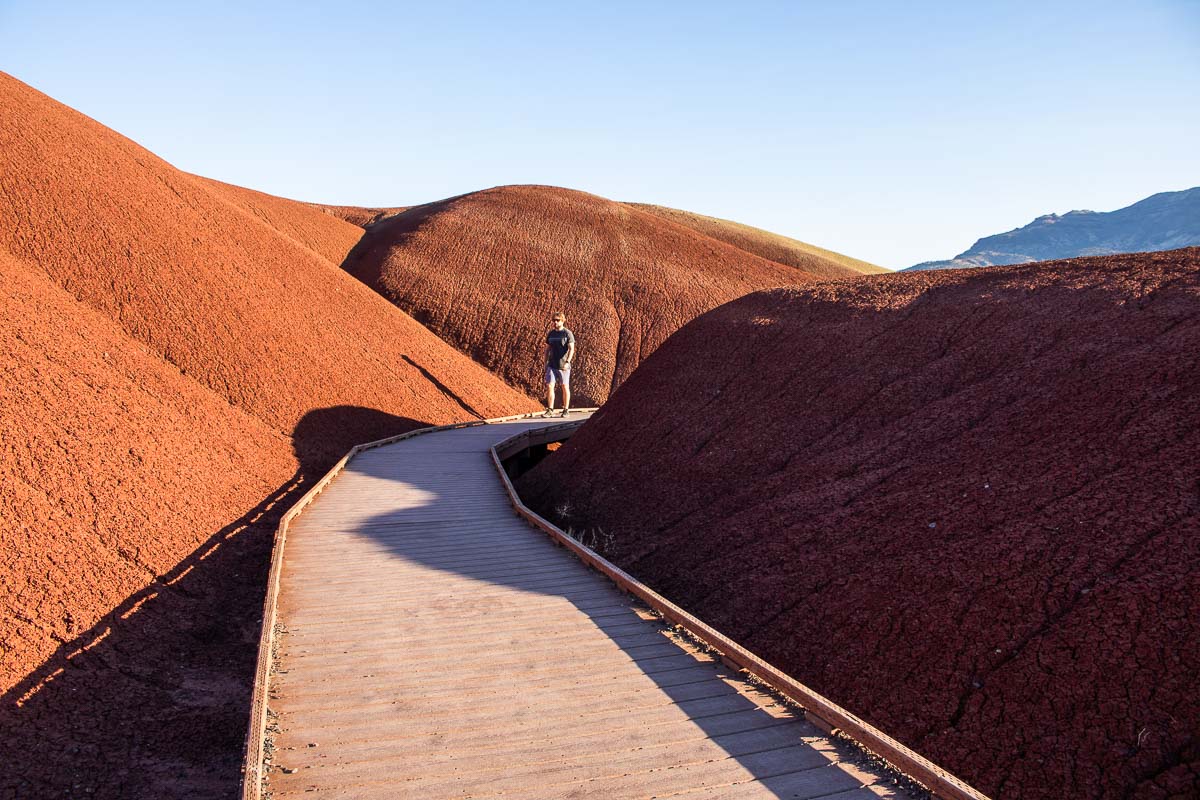
Together with some other Oregon national parks and forests in this list, such as Crater Lake National Park and Mt. Hood National Forest, as well as the Columbia River Gorge, John Day Fossil Beds National Monument is one of the Seven Wonders of Oregon.
It’s unlike anything you might imagine when you think about national parks in Oregon—which is most likely wild coasts, thundering waterfalls, rain clouds and pine forests.
Located in north-central Oregon, this landscape of canyons and cliffs, desert plains and multi-colored badlands is spectacular.
As its name implies, it’s preserved mainly for its phenomenal fossil collections. Its fossil record spans no fewer than 40 million years and includes fossils of countless plants and animals, as well as evidence of ancient climate change.
The most famous unit in John Day Fossil Beds National Monument is the Painted Hills Unit, which encompasses spectacularly colored hills and fossil mounds.
Other units are the Clarno and Sheep Rock Units. Each unit has trails that allow you see these amazing landscapes from up close and learn more about the fossils found here.
More information: https://www.nps.gov/joda/index.htm
4. Mt. Hood National Forest
Managed by: U.S. Forest Service
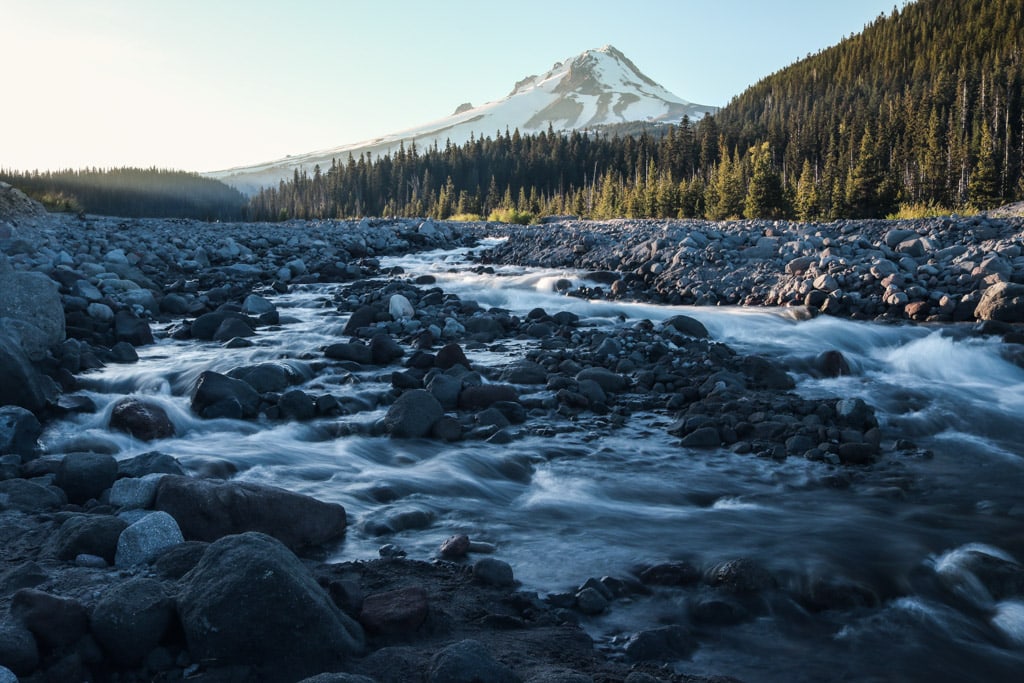
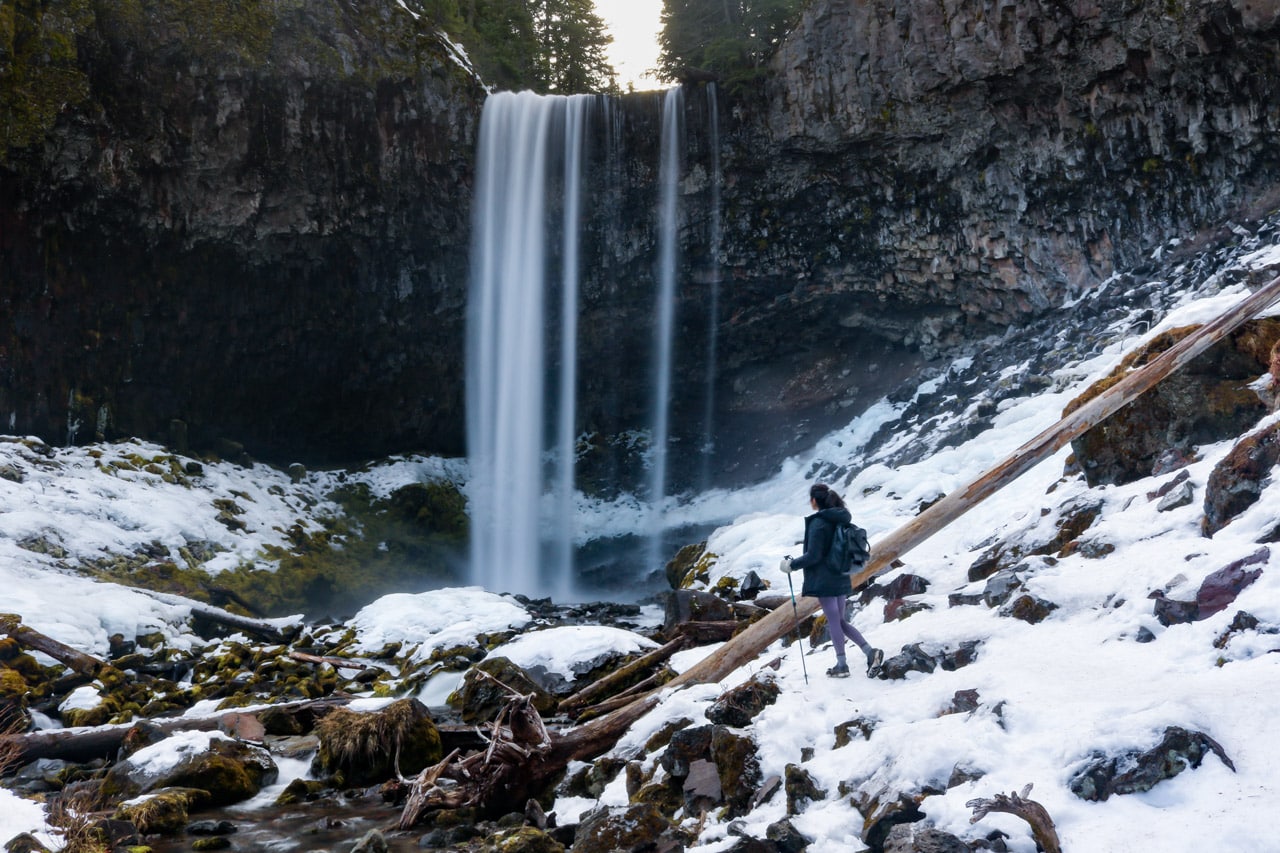
The tallest mountain in Oregon, Mt. Hood towers over this part of the Cascade Range and is clearly visible from downtown Portland.
Find the best spots with views of Mount Hood here!
A major Cascade Range volcano, Mt. Hood is arguably the most spectacular natural feature near Portland.
Drive the Mt. Hood Scenic Byway, which swings around the south side of the mountain, and visit places like Government Camp, Trillium Lake and the historic Timberline Lodge, which served as the exterior of the Overlook Hotel in Stanley Kubrick’s The Shining.
There’s an abundance of hiking opportunities at Mt. Hood. Hike the Tom, Dick and Harry Mountain Trail past Mirror Lake, go for a wander on the Timberline Trail, or stroll around Trillium Lake.
The Tamanawas Falls Trail is another popular trail in Mt. Hood National Forest. You’ll find that one on the east side of the mountain.
Alternatively, you can venture a bit further into the wilderness, where black bears and mountain lions roam, and hike to McNeil Point or visit the popular Lost Lake area on the northwestern flank of Mt. Hood.
Besides providing a plethora of summer fun, Mt. Hood also makes for an amazing winter destination. Its slopes transformed into a bustling winter sports resort, the mountain offers great cross-country skiing, snowboarding, sledding and skiing.
More information: https://www.fs.usda.gov/mthood
3. Deschutes National Forest
Managed by: U.S. Forest Service
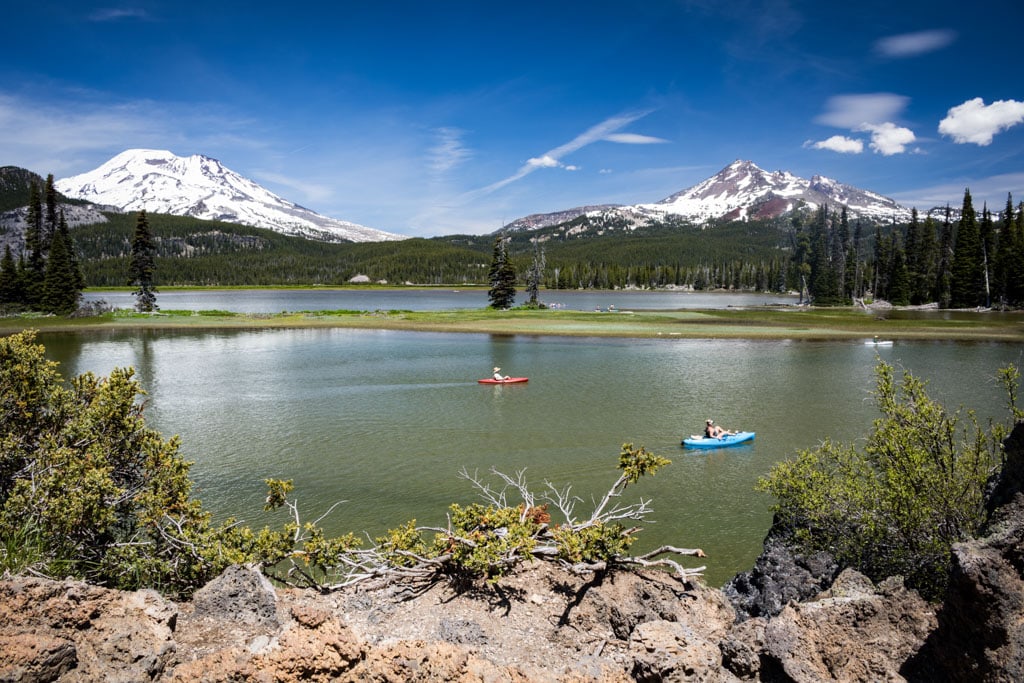
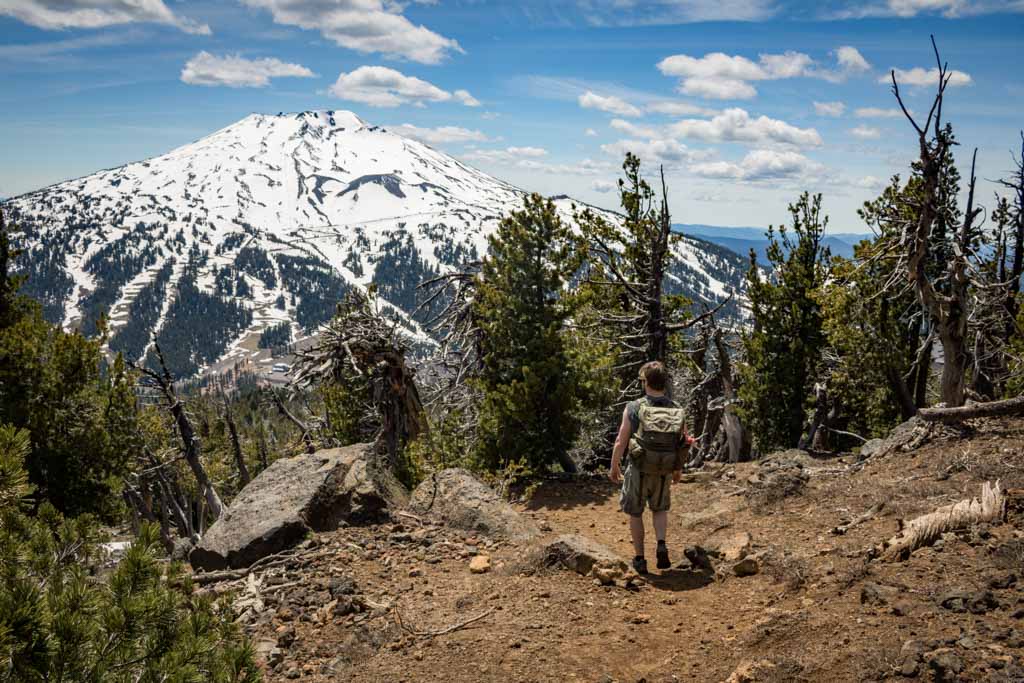
A sprawling national forest in central Oregon, Deschutes National Forest preserves huge tracts of forests, lakes, volcanoes and mountains south(west) of Bend. It’s a dream destination for hikers, kayakers, rock climbers and other adventurists.
Located partially in four Oregon counties—Deschutes, Jefferson, Klamath and Lake—on the eastern slopes of the Cascade Range, this national forest comprises no fewer than 1.8 million acres.
Deschutes National Forest is home to five designated wilderness areas, all of which also extend into other, adjacent national forests.
It’s amazingly diverse, featuring shimmering lakes and scenic rivers, cinder cones and sweeping summit vistas.
While there are several different areas to explore in Deschutes National Forest, I recommend focusing on the glorious Cascade Lakes area.
This series of stunning alpine lakes offers amazing boating, camping and hiking opportunities. The Cascade Lakes Scenic Byway, one of Oregon’s greatest roads, connects these picturesque lakes.
This is also where you’ll find towering Mount Bachelor, a major winter sports hub just west of Bend, while Tumalo Mountain offers jaw-dropping views of the Three Sisters.
Additionally, Deschutes National Park encompasses Newberry National Volcanic Monument, too. Although arguably less known than other Oregon national parks, forests and monuments featured here, it is absolutely worth exploring—so much so that it deserves the number 2 spot on this list.
More information: https://www.fs.usda.gov/main/deschutes
2. Newberry National Volcanic Monument
Managed by: U.S. Forest Service
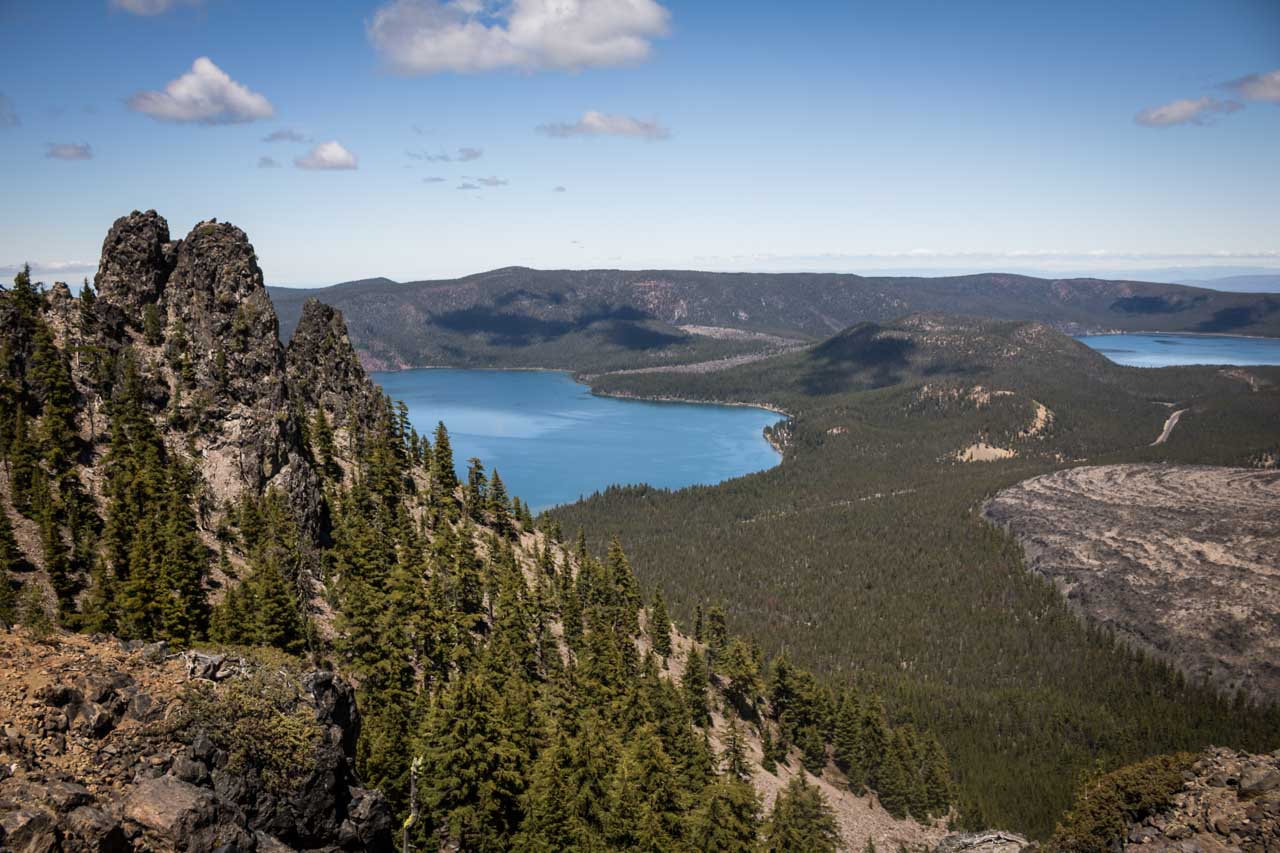
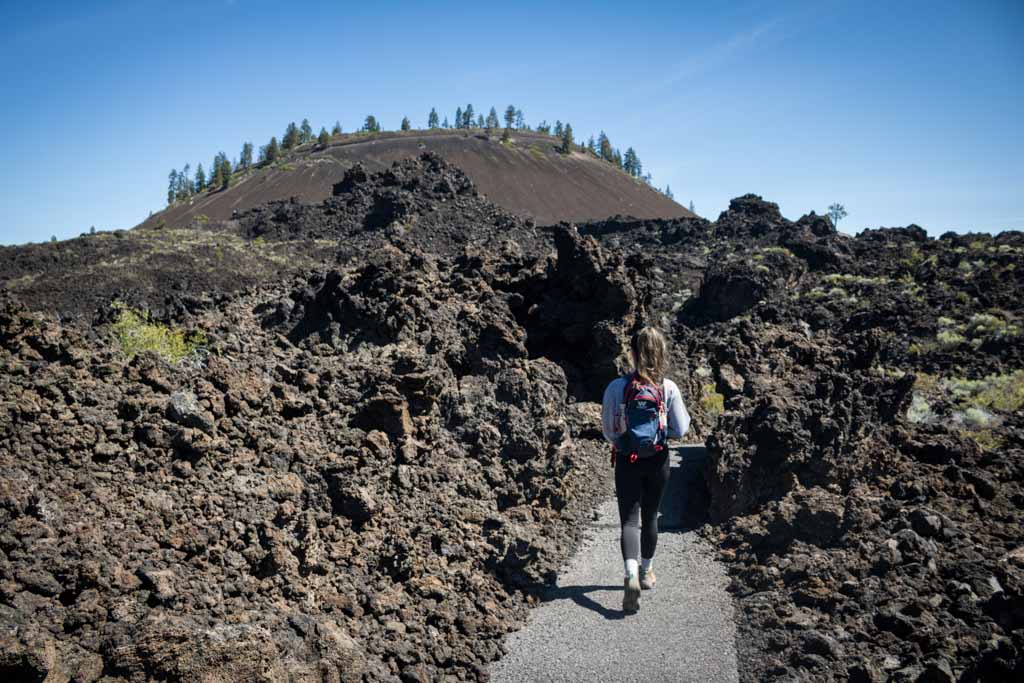
A part of Deschutes National Forest and situated just south of Bend, the Newberry National Volcanic Monument is both extraordinary and underrated.
Much less famous than other Oregon volcanoes, such as Mt. Hood, nearby Mount Bachelor and Crater Lake, the gigantic Newberry Volcano is actually the largest of all Cascade Range volcanoes by volume. It’s about the size of the entire state of Rhode Island.
It’s an enormous shield volcano that encompasses much of eastern Deschutes National Forest. Preserved as Newberry National Volcanic Monument—managed by the U.S. Forest Service—it protects 86 square miles of volcanic features.
When visiting this part of Oregon, you can explore lava flows, lava caves, cinder cones and caldera lakes. Certain areas of this volcanic monument are so otherworldly, almost literally, that Apollo astronauts used to train here in 1964-1966.
Hike to Paulina Peak, the highest point in the monument, and enjoy epic views of Paulina Lake and East Lake, as well as the remarkable Big Obsidian Flow, in the enormous Newberry Caldera.
You can kayak on both lakes, too, while resorts and campgrounds in the area offer a variety of accommodation options.
Another popular part of Newberry National Volcanic Monument is Lava Lands. Home to a visitor center and exhibits, this is where you can walk the easy-yet-awesome Trail of the Molten Lands and hike to the top of the striking Lava Butte cinder cone.
More information: https://www.fs.usda.gov/recarea/deschutes/recarea/?recid=66159
1. Crater Lake National Park
Managed by: National Park Service
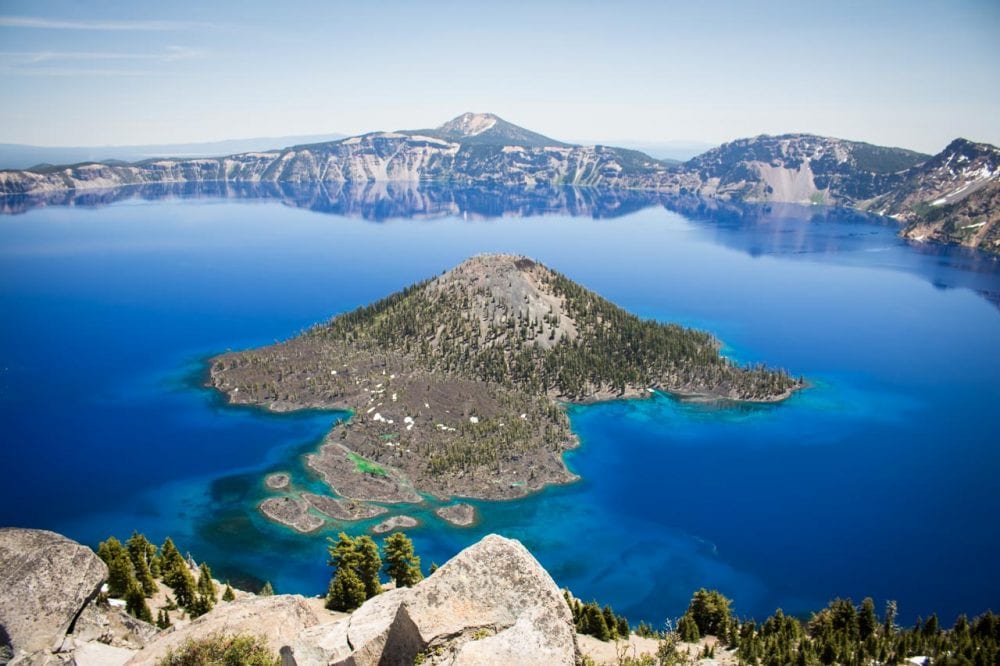
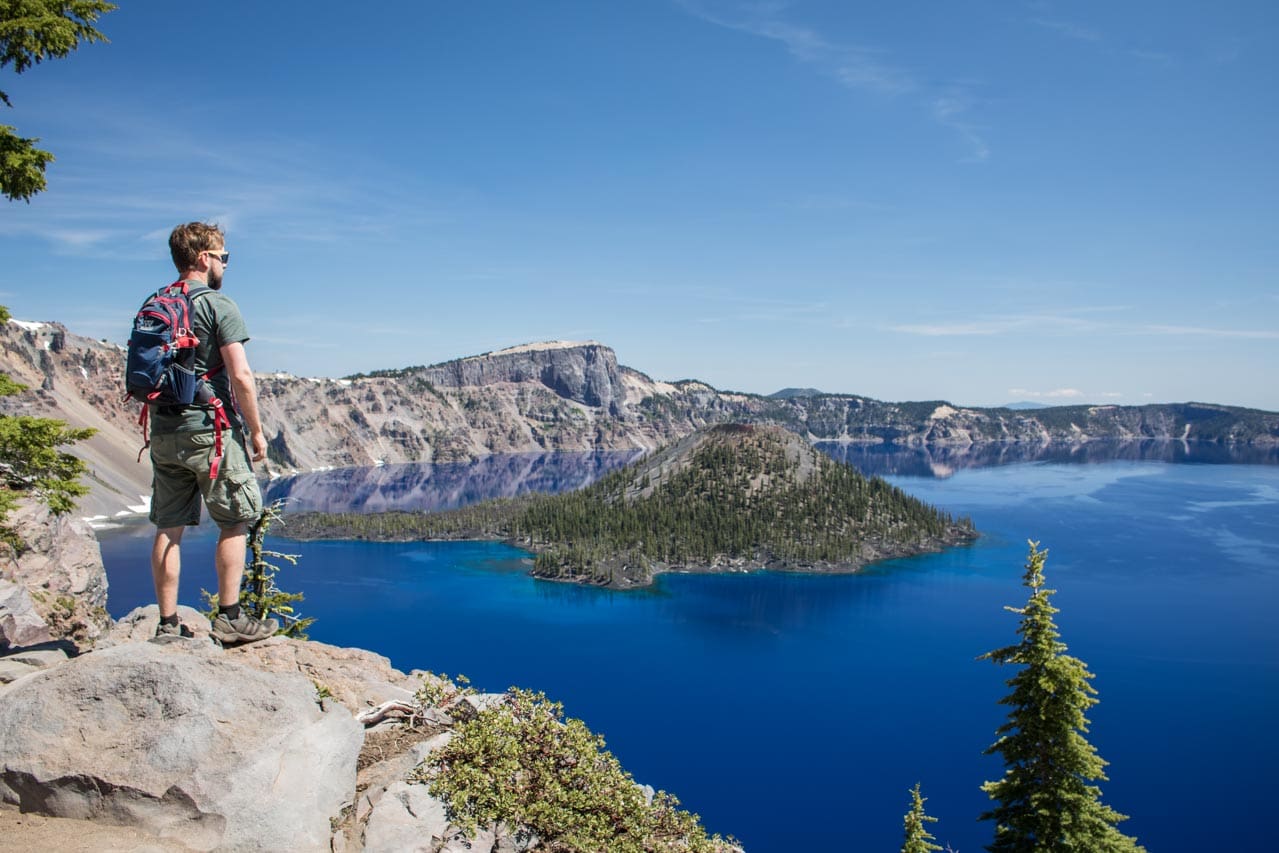
The only “true” national park in Oregon, Crater Lake National Park is about 4 hours south of Portland. A real gem of a park, it’s centered on eponymous Crater Lake.
This water-filled caldera was created after the massive eruption and collapse of Mount Mazama, once a mighty volcano in the Pacific Northwest, about 7,700 years ago. Although its origins are undeniably violent, Crater Lake is now a prime example of peacefulness and tranquility.
Because its water comes entirely from rainfall and snowmelt, the lake has some of the cleanest, and clearest water of any North American lake.
Additionally, with an average depth of 1,843 feet, it’s also the deepest lake in the U.S. The water surface is usually perfectly still, too, which results in stunning reflections of the caldera walls around it.
That ripple-less water often reflects a blue sky, making it “the bluest lake on Earth”, while at night it twinkles with the lights of a thousand stars.
Major highlights include driving the scenic Rim Drive and having lunch at Crater Lake Lodge, one of the finest historic lodges in the national parks. A variety of amazing Crater lake hikes offer spectacular views of Crater Lake, beautiful scenery and an immersive park experience. My favorites are Watchman Peak, Garfield Peak and Plaikni Falls.
I also highly recommend spending a night or two camping at Mazama Campground.
This spectacular Oregon national park is ideal if you’d also like to explore the rest of the state. It’s quite a drive from Portland, the nearest major city, and there’s plenty to see and do along the way.
By driving down the spectacular Pacific Coast Scenic Byway and swinging back north via Newberry National Volcanic Monument, Deschutes National Forest, Bend, Smith Rock and Mt. Hood, you can create an epic road trip loop around Oregon.
More information: https://www.nps.gov/crla/index.htm
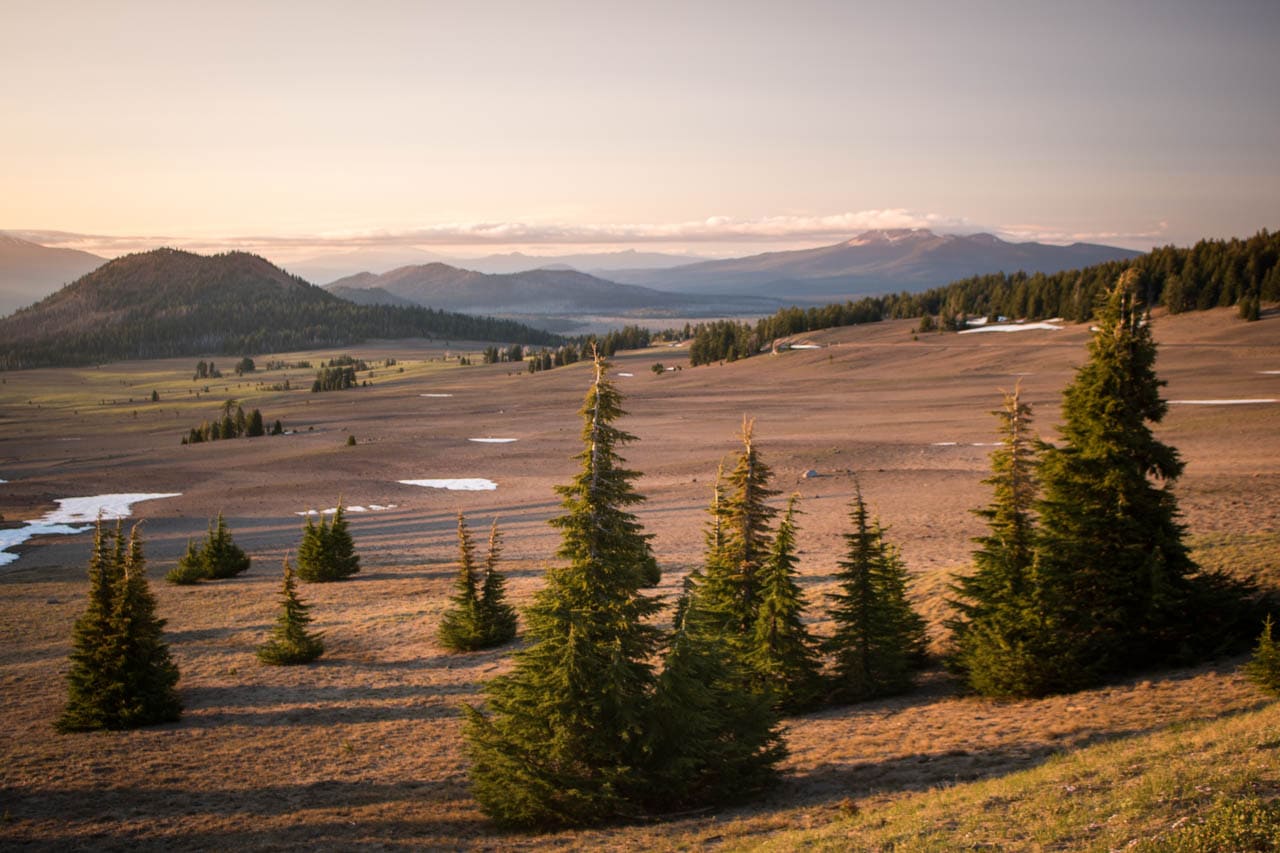
Full List of the 10 Oregon National Park Service Sites
This is the complete list of all ten National Park Service sites in Oregon.
Note that many are single, contiguous parks, while others consist of numerous separate sites, sometimes spread out across hundreds, if not thousands of miles, as is the case with the historic and geologic trails.
- California National Historic Trail
- Crater Lake National Park
- Ice Age Floods National Geologic Trail
- John Day Fossil Beds National Monument
- Fort Vancouver National Historical Park
- Lewis & Clark National Historic Trail
- Lewis and Clark National Historical Park
- Nez Perce National Historical Park
- Oregon National Historic Trail
- Oregon Caves National Monument
Other Great Oregon National Forests and Public Lands to Visit
In addition to the forests, monuments and national parks in Oregon above, there are many other public lands to explore.
From extraordinary national recreation areas to a few beautiful national forests, Oregon has a lot more to offer beyond the popular parks above.
- Oregon Dunes National Recreation Area – U.S. Forest Service
- Hells Canyon National Recreation Area – U.S. Forest Service
- Willamette National Forest – U.S. Forest Service
- Umpqua National Forest – U.S. Forest Service
